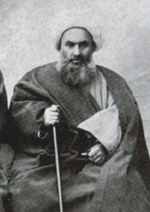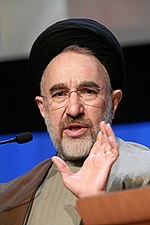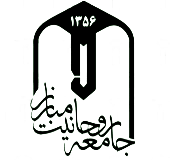
Clericalism in Iran has a long history and had a remarkable impact on Iranian society, politics as well as on Islamic theology.

Clericalism in Iran has a long history and had a remarkable impact on Iranian society, politics as well as on Islamic theology.
There are controversies about the emergence of clericalism in Iran. Some scholars believe that clericalism dates back to 1000 years ago. [1]

Shia:
Sunni:
Structure and functions:
Over the course of history, Iranian seminaries have had traditional functions in the religious sphere to provide support to civil society in the country. However, after the Iranian revolution in 1979, seminaries have been highly politicized and their independence greatly reduced. [2] The revolution created a new political order based on Shiite theological foundations and the absolute ruling power was given to a Shiite jurist/cleric. [3]
The history of Qom seminaries dates back to 3rd century (Hijri). Hossein Ibn Said Ahvazi, a famous theologian, moved from Kufa to Qom. He educated the first generation of clerics in Qom. [4]
Many clerics have been involved in high-profile economic activities, most notably Akbar Hashemi Rafsanjani, Abbas Vaez-Tabasi and Nasser Makarem Shirazi.




Akbar Hashemi Rafsanjani was an Iranian politician, writer, and one of the founding fathers of the Islamic Republic who was the fourth president of Iran from 1989 to 1997. He was the head of the Assembly of Experts from 2007 until 2011 when he decided not to nominate himself for the post. He was also the chairman of the Expediency Discernment Council.

Ayatollah Mohammad Reza Mahdavi Kani was an Iranian Shia cleric, writer and conservative and principlist politician who was Acting Prime Minister of Iran from 2 September until 29 October 1981. Before that, he was Minister of Interior in the cabinets of Mohammad-Ali Rajai and Mohammad-Javad Bahonar. He was the leader of Combatant Clergy Association and Chairman of the Assembly of Experts and also founder and president of Imam Sadiq University.

Ayatollah Taqi Mesbah, commonly known as Mohammad-Taqi Mesbah-Yazdi was an Iranian Shi'i cleric, philosopher and conservative political theorist who served as the spiritual leader of the Front of Islamic Revolution Stability.

Grand Ayatollah Sayyid Muhammad al-Husayni al-Shirazi, commonly known as Imam Shirazi, was an Iranian-Iraqi Shia marja' and political activist

The Combatant Clergy Association is a politically active group in Iran, but not a political party in the traditional sense.
In Shi'a Islam the guidance of clergy and keeping such a structure holds a great importance. The clergy structure depends on the branch of Shi'ism is being referred to.

The history of Islamic fundamentalism in Iran covers the historical development of Islamic fundamentalism, Islamism, Islamic revivalism, and the rise of political Islam in modern Iran. Today, there are basically three types of Islam in Iran: traditionalism, modernism, and a variety of forms of revivalism usually brought together as fundamentalism. Neo-fundamentalists in Iran are a subgroup of fundamentalists who have also borrowed from Western countercurrents of populism, fascism, anarchism, Jacobinism, and Marxism. The term "Principlists" or Osoulgarayan, is an umbrella term commonly used in Iranian politics to refer to a variety of conservative circles and parties. The term contrasts with reformists or Eslaah-Talabaan, who seek religious and constitutional reforms in Iran.

The Society of Seminary Teachers of Qom is an Iranian group founded in 1961/3 by the leading Muslim clerics of Qom. Established by the students of Ayatollah Khomeini after his exile to Iraq, it was formed in order to organize political activities of Khomeini's followers and promote his revolutionary interpretation of Islam, such as the idea of Islamic government. Since the 1979 revolution, it has largely become the body to keep the regime's registrar of who counts as a grand ayatollah, an Ayatollah and a Hojjat ul Islam. It has a head who is appointed by the Supreme Leader of the Islamic Republic. It currently heads the Supreme Council of Qom Hawzas, and proposes judges to the judiciary system. The body gained international prominence when it announced in 1981 that Ayatollah Shariatmadari was no longer a source of emulation (marja'). It has demoted a number of clerics over the last three decades. A recent case was that of Ayatollah Yousef Saanei who for his solidarity with the green movement was demoted from marja' to hojatoleslam. The Society also includes Ayatollah Sistani on its list.

Grand Ayatollah Mohammad Reza Golpaygani was an Iranian Shia Islam s and marja scholar was born in 1899 in Gogad village near the city of Golpaygan, Iran. He was taught preliminary studies by his father, Mohammad Bagher. At the age of 9, his father died, and he moved to Golpaygan to continue his studies. He was one of the highest-ranking Islamic clergies to participate in the Islamic Revolution of 1979, and a one-time serious contender to succeed Ruhollah Khomeini in the 1989 Iranian Supreme Leader election. However, his candidacy was voted down by the Assembly of Experts, in favor of the eventual successor, Ali Khamenei.

The Qom Seminary is the largest Islamic seminary (hawza) in Iran, established in 1922 by Grand Ayatollah Abdul-Karim Haeri Yazdi in Qom. It trains Usuli scholars.

Akbar Hashemi Rafsanjani served as the fourth president of Iran from 1989 until 1997.

Hassan Rouhani, a moderate Iranian politician and former Secretary of the Supreme National Security Council, also known as the Diplomat Sheikh, launched his presidential campaign in March 2013. He was earlier expected to withdraw and endorse Ali Akbar Hashemi Rafsanjani after he registered, but he returned to the race after Hashemi's disqualification. The symbol of Rouhani's campaign was a key and his slogan was "Government of Prudence and Hope." On 15 June, he was elected as the president with 18,613,329 votes.
The fifth Iranian Assembly of Experts election were held in Iran on 26 February 2016 to elect the members of the Assembly of Experts. All 88 members of the Assembly of Experts, who are known as mujtahids, are directly elected. The elections had been planned for 2014, but were delayed in order for the election to be held alongside the Islamic Consultative Assembly elections.

Seyyed Mohammad Reza Saeedi was an Iranian Twelver Shia cleric; who was among the (known) revolutionary companions of Iran's previous/first supreme leader, Seyyed Ruhollah Khomeini; and eventually was killed due to the tortures of SAVAK at the age of 41.

Sheikh Ali Akbar Masoudi Khomeini Persian: شیخ علیاکبر مسعودی خمینی, is an Iranian ayatollah. He is a member of the Society of Seminary Teachers of Qom, as well as serving as the Trustee for Fatima Masumeh Shrine.